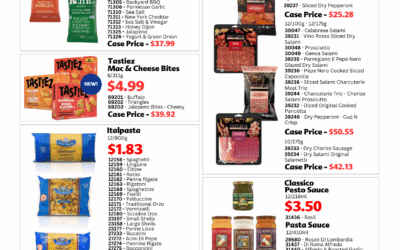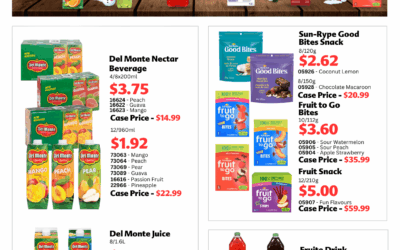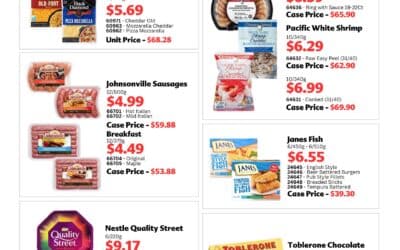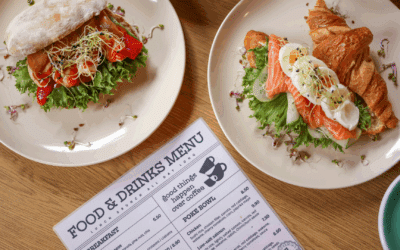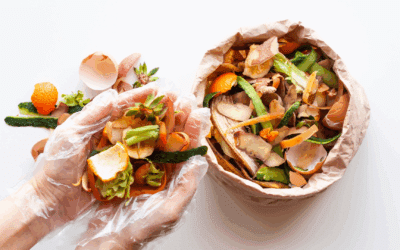In the competitive world of the food industry, having a well-designed menu is crucial for the success of any restaurant. A well-crafted menu not only showcases your culinary offerings but also acts as a powerful marketing tool that can significantly impact your bottom line. Menu engineering, the art and science of crafting a menu that maximizes profitability and customer satisfaction, can transform your menu into a strategic asset. At CJR Wholesale & DairyCentral, we understand the importance of optimizing menu layout and pricing. In this guide, we’ll explore the essential elements of menu engineering and provide actionable tips to help you create a menu that boosts your profits.
Understanding Menu Engineering
Menu engineering is a systematic approach to designing a restaurant menu that maximizes profitability while enhancing customer satisfaction. It involves analyzing the profitability and popularity of menu items to strategically design a menu that encourages customers to choose high-profit items. By focusing on these aspects, you can enhance the overall dining experience and drive higher sales. Let’s dive deeper into the key components of menu engineering:
Analyzing Profitability and Popularity
The foundation of menu engineering lies in understanding which items on your menu are the most profitable and the most popular. This involves:
- Profitability Analysis: Calculate the gross profit margin for each menu item by subtracting the cost of ingredients from the selling price. This helps identify items that generate the highest profit per sale.
- Popularity Analysis: Track the sales data for each menu item to determine which items are ordered most frequently by customers. This provides insights into customer preferences and demand.
Categorizing Menu Items
Once you have analyzed the profitability and popularity of your menu items, categorize them into four distinct groups:
- Stars: High-profit, high-popularity items. These are your most valuable items and should be prominently featured on your menu to attract customers.
- Plowhorses: Low-profit, high-popularity items. These items are popular but do not contribute significantly to profit margins. Explore ways to increase their profitability without sacrificing quality.
- Puzzles: High-profit, low-popularity items. These items have the potential to generate high profits but are not ordered frequently. Focus on marketing and repositioning these items to increase their appeal.
- Dogs: Low-profit, low-popularity items. These items do not contribute much to your profits or customer satisfaction. Evaluate whether to improve or remove these items from your menu.
Adjusting Layout and Design
The layout and design of your menu play a crucial role in guiding customers’ choices and highlighting high-profit items. Consider the following strategies:
- Visual Hierarchy: Create a visual hierarchy using design elements like font size, color, and placement to draw attention to specific items. High-profit items (Stars) should be placed in the most prominent locations, such as the top right corner of the menu.
- Design Elements: Use boxes, borders, or icons to make high-profit items stand out. Highlighting these items can attract customers’ attention and encourage them to order.
- Descriptive Language: Use engaging and descriptive language to make menu items more appealing. Highlight unique ingredients, preparation methods, and flavors to justify higher prices and attract customers’ interest.
- Limiting Choices: Offering too many options can overwhelm customers. Aim for a balanced menu with a variety of choices without overloading. This can streamline kitchen operations and improve customer decision-making.
Setting Appropriate Pricing
Effective pricing strategies are essential for maximizing profitability. Consider the following approaches:
- Psychological Pricing: Utilize psychological pricing techniques, such as pricing items just below whole numbers (e.g., $9.99 instead of $10.00). This can make prices seem more attractive to customers.
- Price Anchoring: Include a high-priced item near the top of each category to create a price anchor. This makes other items appear more reasonably priced in comparison.
- Cost-Based Pricing: Ensure your prices cover food costs, labor, and overhead while still providing a reasonable profit margin. Regularly review and adjust prices based on market conditions and ingredient costs.
- Value Perception: Emphasize the value customers are getting for their money. This could be through portion sizes, quality of ingredients, or unique flavors that justify the price.
- Bundle Deals: Offer bundled meals or combo deals that encourage customers to spend more while feeling they are getting a good deal. This can increase the average check size.
Menu engineering is an ongoing process that requires continuous evaluation and adjustment. Regularly analyze sales data to understand how your menu is performing. Identify trends, monitor the popularity and profitability of items, and be prepared to make adjustments. Use customer feedback, sales reports, and industry trends to inform your decisions and keep your menu dynamic and responsive to customer preferences.
Highlight High-Profit Items
Effectively highlighting high-profit items on your menu is crucial for steering customers towards ordering dishes that generate the most revenue for your restaurant. High-profit items, or “Stars,” are those that not only have a high-profit margin but are also popular among customers. Here are some detailed strategies to make these items stand out:
Use Design Elements
Visual cues are powerful tools in menu design. By using various design elements, you can draw customers’ attention to high-profit items:
- Boxes and Borders: Encasing high-profit items in boxes or using borders around them can make these items stand out. This creates a visual distinction that catches the eye and guides customers toward these selections.
- Icons and Symbols: Adding icons, such as stars, chef’s hats, or specialty markers, next to high-profit items can indicate that these dishes are special or recommended. Icons can quickly communicate that an item is worth trying.
- Font Styles and Colors: Utilize different font styles and colors to highlight high-profit items. Bold fonts, larger text, or different colors can draw attention and make these items more noticeable. For instance, using a gold or red font can signify importance or specialty.
Strategic Placement
Where you place items on your menu significantly affects what customers order. Research shows that customers’ eyes naturally gravitate to certain areas of the menu:
- Top Right Corner: Placing high-profit items in the top right corner of the menu is a well-known tactic. This area is often the first place customers look when scanning a menu. Ensuring your most profitable dishes are here increases the likelihood of them being chosen.
- Golden Triangle: The “Golden Triangle” concept involves placing high-profit items at the three focal points customers’ eyes are drawn to: the top right corner, the center, and the top left corner. Arranging your menu so that these areas feature high-profit items can effectively guide customer choices.
Descriptive and Enticing Language
The way you describe your menu items can greatly influence customer decisions. Use descriptive and enticing language to make high-profit items more appealing:
- Evocative Descriptions: Highlight the unique aspects and flavors of high-profit items. Use descriptive words that evoke taste, aroma, and experience. For example, instead of “Grilled Chicken,” use “Succulent Grilled Chicken with Fresh Herbs and Lemon Zest.”
- Ingredient Highlighting: Mention key ingredients that are likely to attract customers, especially if they are high-quality or unique. This can justify a higher price and make the dish sound more appealing.
- Cultural or Emotional Appeal: Connect dishes to cultural or emotional experiences. For example, “Grandma’s Homemade Apple Pie” or “Authentic Italian Pasta.”
Visual Aids
High-quality images can be powerful in influencing customer choices. However, they should be used sparingly to avoid clutter and maintain a professional look:
- Professional Photos: Use professional, appetizing photos of high-profit items. Ensure the images are true to the actual presentation of the dishes to meet customer expectations and avoid disappointment.
- Limited Use: Include photos for only a few key high-profit items. This prevents the menu from looking too busy and ensures that the highlighted items stand out.
Menu Inserts and Specials
Introducing special sections or inserts in your menu can also highlight high-profit items:
- Chef’s Specials: Create a section for “Chef’s Specials” that includes high-profit items. This section can be prominently displayed on the first page of the menu or as a separate insert.
- Seasonal Features: Use seasonal menus or inserts to highlight high-profit items that are available for a limited time. This creates a sense of urgency and exclusivity.
Customer Feedback and Testing
Regularly test different design elements and placements to see what works best for your specific customer base. Use customer feedback and sales data to refine your menu design continuously.
- A/B Testing: Experiment with different menu layouts and designs to see which ones drive higher sales of high-profit items. Make changes based on the results.
- Customer Surveys: Gather feedback from customers about the menu layout and descriptions. Use this information to make improvements that enhance customer satisfaction and profitability.
By employing these strategies to highlight high-profit items, you can effectively guide customers towards choices that boost your restaurant’s revenue. At CJR Wholesale & DairyCentral, we are committed to helping you optimize your menu for maximum profit and customer satisfaction.
Use Descriptive Language
Descriptive language plays a critical role in menu engineering by engaging customers and highlighting the unique aspects and flavors of your dishes. Well-crafted descriptions can make menu items more appealing and justify higher prices. Here’s how to effectively use descriptive language to enhance your menu:
Evocative Descriptions
Descriptive language should evoke the senses and create a vivid picture of the dish in the customer’s mind. Use words that describe the taste, texture, aroma, and visual appeal of the food:
- Taste and Flavour: Highlight the distinct flavours of your dishes. Use words like “savoury,” “spicy,” “sweet,” “tangy,” “zesty,” and “umami” to give customers an idea of what to expect.
Example: Instead of “Grilled Chicken,” use “Juicy Grilled Chicken marinated in a blend of savoury herbs and spices.” - Texture: Describe the texture of the food to enhance its appeal. Words like “crispy,” “tender,” “creamy,” “crunchy,” and “velvety” can make dishes sound more appetizing.
Example: Instead of “French Fries,” use “Crispy, golden French fries.” - Aroma: Mention the aroma to create a sensory connection. Words like “aromatic,” “fragrant,” “smoky,” and “freshly baked” can enhance the appeal.
Example: Instead of “Garlic Bread,” use “Warm, freshly baked garlic bread with a fragrant herb butter.” - Visual Appeal: Paint a picture of the dish’s presentation. Words like “vibrant,” “colourful,” and “garnished with fresh herbs” can make dishes more enticing.
Example: Instead of “Salad,” use “Vibrant garden salad with crisp, colourful vegetables, artfully presented and garnished with fresh herbs.”
Highlight Key Ingredients
Emphasize the quality and uniqueness of the ingredients used in your dishes. This can justify higher prices and make the dishes sound more appealing:
- Premium Ingredients: Mention any high-quality or specialty ingredients that set your dishes apart. Words like “organic,” “locally sourced,” “grass-fed,” “wild-caught,” and “artisanal” can add value.
Example: Instead of “Cheeseburger,” use “Grass-fed beef cheeseburger with aged cheddar and organic greens.” - Unique Combinations: Highlight interesting or unexpected ingredient combinations that create a unique flavor profile.
Example: Instead of “Pasta with Tomato Sauce,” use “Homemade pasta with a rich, slow-cooked tomato and basil sauce, topped with a sprinkle of aged Parmesan.” - Freshness: Emphasize the freshness of your ingredients to convey quality. Words like “freshly picked,” “handcrafted,” “made-to-order,” and “daily prepared” can enhance the appeal.
Example: Instead of “Fruit Salad,” use “A refreshing fruit salad with freshly picked, seasonal fruits.”
Cultural and Emotional Appeal
Connecting dishes to cultural or emotional experiences can enhance their appeal and create a stronger connection with customers:
- Cultural Significance: Highlight the cultural or regional origins of a dish to add authenticity and interest.
Example: Instead of “Tacos,” use “Authentic Mexican street tacos with marinated carne asada and fresh cilantro.” - Emotional Connection: Create an emotional connection by linking dishes to memories or experiences. Words like “comfort food,” “homestyle,” “grandma’s recipe,” and “celebration” can evoke positive feelings.
Example: Instead of “Apple Pie,” use “Grandma’s homestyle apple pie with a flaky, buttery crust and sweet, cinnamon-spiced apples.”
Storytelling
Tell a story about the dish or its ingredients to engage customers and make the menu item more memorable:
- Origin Story: Share the story of how a dish was created or its historical background.
Example: “Our signature dish, the ‘Fisherman’s Stew,’ is a family recipe passed down through generations, featuring a rich tomato broth and fresh seafood caught daily.” - Chef’s Inspiration: Describe the chef’s inspiration or the culinary journey behind the dish.
Example: “Inspired by the vibrant flavors of the Mediterranean, our ‘Mediterranean Lamb Skewers’ are marinated in a blend of herbs and spices, then grilled to perfection.” - Ingredient Journey: Detail the journey of key ingredients from farm to table.
Example: “Our ‘Farmhouse Salad’ features greens from local farms, handpicked at the peak of freshness, and topped with artisanal goat cheese and a drizzle of honey from our beekeeper.”
By using descriptive language effectively, you can make your menu items more appealing, justify higher prices, and create a memorable dining experience for your customers. At CJR Wholesale & DairyCentral, we are dedicated to helping you craft a menu that not only showcases your culinary creations but also drives profitability and customer satisfaction.
Limit Choices
Offering a plethora of menu options might seem like a great way to attract a wide range of customers, but it can actually have the opposite effect. Too many choices can overwhelm customers, leading to decision fatigue and potentially reducing overall satisfaction. A well-curated menu with a balanced variety of options not only enhances the customer experience but also streamlines kitchen operations. Here’s how to effectively limit choices on your menu:
Avoid Decision Fatigue
When customers face too many choices, they may experience decision fatigue, which can negatively impact their dining experience. By simplifying your menu, you can help customers make decisions more easily and enjoy their meal more:
- Simplify Options: Reduce the number of similar items to avoid redundancy. For example, instead of offering ten different types of burgers, limit the options to three or four unique variations.
Example: Rather than having a separate page for each type of sandwich, offer a concise list with distinct choices like “Classic BLT,” “Turkey Avocado,” and “Grilled Veggie Panini.” - Streamline Categories: Keep menu categories straightforward. Instead of multiple subcategories, use broad categories like appetizers, mains, and desserts, each with a few well-chosen items.
Example: Instead of having separate sections for “Beef,” “Chicken,” and “Seafood,” consider a “Mains” section where each protein has one or two standout dishes.
Enhance Customer Experience
A focused menu helps customers quickly find something they’ll enjoy without feeling overwhelmed. This can lead to higher satisfaction and more confident ordering:
- Curated Selection: Offer a curated selection of dishes that represent the best your restaurant has to offer. Highlight signature dishes or customer favorites.
Example: Showcase a “Chef’s Favorites” section with a select few dishes that are known for their exceptional taste and popularity. - Menu Layout: Design the menu layout to guide customers effortlessly through their choices. Use headings and subheadings to clearly differentiate sections.
Example: Organize the menu with clear, bold headings like “Appetizers,” “Entrees,” “Sides,” and “Desserts,” each with a limited number of high-quality options.
Streamline Kitchen Operations
A concise menu not only benefits customers but also makes kitchen operations more efficient. Fewer menu items mean streamlined preparation, faster service, and reduced waste:
- Operational Efficiency: A smaller menu allows the kitchen to focus on perfecting a limited number of dishes, ensuring consistent quality and quicker turnaround times.
Example: By focusing on a few key dishes, chefs can refine their techniques and ensure every plate meets high standards of quality and presentation. - Inventory Management: Managing a limited inventory reduces waste and makes it easier to control food costs. This ensures that ingredients are fresh and dishes are consistently available.
Example: With fewer ingredients to stock, you can better manage inventory levels, reducing the likelihood of spoilage and over-ordering. - Training and Consistency: A streamlined menu simplifies staff training, ensuring that all team members are well-versed in preparing and serving each dish to the highest standards.
Example: Staff can become experts in the menu items, leading to better preparation, presentation, and customer service.
Focus on Quality Over Quantity
Quality should always take precedence over quantity. By offering a limited number of high-quality dishes, you can create a more memorable dining experience:
- Signature Dishes: Focus on perfecting signature dishes that showcase your restaurant’s strengths and culinary expertise. This can help differentiate your establishment from competitors.
Example: Feature a few standout items that represent your restaurant’s unique culinary style and consistently receive positive feedback from customers. - Seasonal Menus: Rotate seasonal menus to keep the offerings fresh and exciting without overwhelming customers with too many choices at once.
Example: Introduce a “Seasonal Specials” section that changes quarterly, highlighting dishes made with fresh, seasonal ingredients.
Balanced Variety
While limiting choices, it’s important to ensure that the menu still offers enough variety to cater to different tastes and dietary preferences:
- Diverse Options: Include a balanced variety of options, such as vegetarian, gluten-free, and low-carb dishes, to accommodate different dietary needs.
Example: Ensure each category (appetizers, mains, desserts) has a mix of meat, seafood, and vegetarian options to appeal to a broad audience. - Flexibility: Offer customizable options where possible, such as allowing customers to choose their protein for certain dishes or offering a selection of sides.
Example: Provide options like “Choose Your Own Protein” for salads or bowls, giving customers flexibility while keeping the menu concise.
By limiting choices on your menu, you can enhance the customer experience, streamline kitchen operations, and maintain high standards of quality. At CJR Wholesale & DairyCentral, we understand the importance of a well-balanced menu and are committed to helping you create a dining experience that delights customers and drives profitability.
Organize by Category
Organizing your menu by category is a fundamental aspect of menu design that enhances the overall dining experience. By grouping similar items together, you make it easier for customers to navigate the menu and find what they’re looking for. This not only improves customer satisfaction but also encourages strategic ordering that can boost profitability. Here’s how to effectively organize your menu by category:
Clear and Logical Groupings
Clear and logical groupings of menu items help customers quickly locate their desired dishes. Common categories include appetizers, main courses, desserts, beverages, and sides. Here’s how to structure these groupings effectively:
- Appetizers: Start with appetizers, as they are often the first items customers consider. List a variety of options that cater to different tastes, from light bites to more substantial starters.
Example: “Appetizers” section could include items like “Bruschetta,” “Stuffed Mushrooms,” and “Chicken Wings.” - Main Courses: Follow with main courses, typically divided into subcategories based on the type of protein or dish style, such as seafood, poultry, beef, pasta, and vegetarian.
Example: Subsections like “Seafood” (e.g., “Grilled Salmon,” “Lobster Ravioli”), “Poultry” (e.g., “Roast Chicken,” “Chicken Alfredo”), and “Vegetarian” (e.g., “Vegetable Stir-Fry,” “Mushroom Risotto”). - Desserts: Place desserts towards the end of the menu, offering a selection that ranges from light options like fruit salad to richer choices like chocolate cake.
Example: “Desserts” section with items like “Tiramisu,” “Cheesecake,” and “Fruit Tart.” - Beverages: Include a beverage section that lists alcoholic and non-alcoholic drinks, from cocktails and wines to soft drinks and specialty coffees.
Example: “Beverages” section with categories like “Cocktails” (e.g., “Mojito,” “Margarita”), “Wines” (e.g., “Chardonnay,” “Merlot”), and “Non-Alcoholic” (e.g., “Lemonade,” “Espresso”). - Sides: Offer a sides section where customers can choose additional items to complement their main dishes.
Example: “Sides” section with items like “French Fries,” “Steamed Vegetables,” and “Garlic Bread.”
Subcategories and Special Sections
Within each main category, consider adding subcategories or special sections to further organize the menu and highlight particular items:
- Specialty Sections: Create sections for specialties or chef’s recommendations. This can draw attention to high-profit or signature dishes.
Example: “Chef’s Specials” with unique or seasonal dishes like “Pan-Seared Duck Breast” and “Pumpkin Ravioli.” - Dietary Preferences: Include sections for dietary preferences, such as gluten-free, vegan, or low-calorie options. This makes it easy for customers with specific dietary needs to find suitable dishes.
Example: “Gluten-Free” section with items like “Quinoa Salad,” “Grilled Shrimp,” and “Fruit Sorbet.”
Visual and Navigational Cues
Use visual and navigational cues to guide customers through the menu. This enhances readability and helps customers find what they want more efficiently:
- Headings and Subheadings: Use clear, bold headings for each main category and subheadings for subcategories. This breaks the menu into manageable sections.
Example: Bold headings like “Appetizers,” “Main Courses,” and “Desserts,” with subheadings like “Seafood,” “Poultry,” and “Vegetarian.” - Section Dividers: Use lines, borders, or spacing to separate sections visually. This helps distinguish different categories and improves the overall layout.
Example: A thin line or decorative divider between “Appetizers” and “Main Courses” to visually separate the sections. - Consistent Layout: Maintain a consistent layout and design style throughout the menu. This ensures a cohesive look and makes it easier for customers to read.
Example: Using the same font style, size, and color scheme for all headings and descriptions.
Menu Flow and Customer Journey
Consider the natural flow of a meal and how customers typically navigate a menu. Arrange the categories in a way that mirrors the dining experience:
- Sequential Order: Present the menu in the order that customers are likely to make their choices: appetizers, mains, desserts, beverages, and sides. This logical sequence enhances the decision-making process.
Example: Starting with “Appetizers” followed by “Main Courses,” then “Desserts,” and ending with “Beverages” and “Sides.” - Highlighting Specials: Place specials or high-profit items within their respective categories but use design elements to make them stand out.
Example: Within the “Main Courses” section, use a box or highlight for “Chef’s Special Steak” to draw attention.
Menu Size and Balance
While organizing by category, ensure the menu is balanced in size and variety. Too many items in one category can overwhelm customers, while too few can limit choices:
- Balanced Variety: Offer a balanced number of options in each category to cater to different tastes without overwhelming customers.
Example: Each category (e.g., “Appetizers,” “Main Courses”) having 6-8 well-curated options. - Focus on Quality: Prioritize quality over quantity. Ensure that each item listed is of high quality and representative of your restaurant’s culinary strengths.
Example: A concise “Seafood” subsection with carefully selected dishes like “Seared Scallops” and “Grilled Shrimp Skewers,” ensuring each is a standout option.
By organizing your menu by category, you create a structured, easy-to-navigate menu that enhances the customer experience and encourages strategic ordering. At CJR Wholesale & DairyCentral, we are dedicated to helping you design a menu that not only delights your customers but also drives profitability.
Cost-Based Pricing
Cost-based pricing is a fundamental strategy in menu engineering that ensures your prices cover all associated costs while still providing a reasonable profit margin. This approach involves a thorough understanding of food costs, labor expenses, and overhead, and requires regular adjustments based on market conditions and ingredient costs. Here’s how to implement effective cost-based pricing:
Understanding Food Costs
Food costs are the direct costs associated with the ingredients used to prepare each dish. Accurately calculating food costs is the first step in setting menu prices:
- Ingredient Tracking: Keep detailed records of the cost of each ingredient used in your menu items. This includes tracking prices from suppliers and noting any fluctuations.
Example: If a “Grilled Chicken Salad” includes chicken, lettuce, tomatoes, cucumbers, and dressing, track the cost of each ingredient per portion. - Recipe Costing: Calculate the total cost of ingredients for each menu item. Break down recipes into individual components to determine the precise cost of each portion.
Example: For the “Grilled Chicken Salad,” add up the costs of 6 oz of chicken, 1 cup of lettuce, 1/2 cup of tomatoes, 1/4 cup of cucumbers, and 2 tbsp of dressing.
Labor and Overhead Costs
Labor and overhead costs are indirect costs that must be accounted for when setting menu prices. These include wages, utilities, rent, and other operational expenses:
- Labor Costs: Calculate the cost of labor involved in preparing each dish. This includes the wages of chefs, kitchen staff, and any other personnel directly involved in food preparation.
Example: If it takes 10 minutes for a chef earning $20/hour to prepare the “Grilled Chicken Salad,” the labor cost is approximately $3.33 per salad. - Overhead Costs: Distribute your total overhead costs across all menu items. This includes utilities, rent, marketing, and other expenses necessary to run your restaurant.
Example: If your monthly overhead is $10,000 and you sell 2,000 meals per month, the overhead cost per meal is $5.
Setting Profit Margins
Once you’ve calculated the total cost of each menu item (food, labor, and overhead), determine the appropriate profit margin to ensure your restaurant remains profitable:
- Profit Margin Calculation: Add a profit margin to the total cost of each dish. This margin should cover unexpected costs and contribute to your overall profitability.
Example: If the total cost of the “Grilled Chicken Salad” is $8.33 ($3.33 labor + $5 overhead) and you aim for a 30% profit margin, the selling price should be approximately $12 ($8.33 + $3.67). - Market-Based Adjustments: Adjust profit margins based on market conditions, customer expectations, and competitive pricing. Ensure your prices remain attractive to customers while achieving desired profit levels.
Example: If competitors are selling similar salads for $11, you might set your price at $11.50, emphasizing superior quality or unique ingredients to justify the higher price.
Regular Review and Adjustment
Regularly reviewing and adjusting prices based on market conditions and ingredient costs is crucial for maintaining profitability:
- Monitor Ingredient Costs: Keep an eye on changes in ingredient prices. Fluctuations in the cost of raw materials, such as seasonal price changes or supply chain disruptions, can impact your food costs.
Example: If the price of chicken increases by 10%, recalculate the cost of the “Grilled Chicken Salad” and adjust the menu price accordingly. - Analyze Sales Data: Regularly analyze sales data to identify trends and evaluate the performance of menu items. Determine if certain dishes are underpriced or overpriced based on their popularity and profitability.
Example: If the “Grilled Chicken Salad” is a top seller but has a lower profit margin than expected, consider a slight price increase to boost profitability without deterring customers. - Market Conditions: Stay informed about broader market conditions, including economic trends, competitor pricing, and customer spending habits. Adjust your pricing strategy to reflect these external factors.
Example: During economic downturns, you might offer special promotions or value deals to attract cost-conscious customers while maintaining profitability.
Practical Implementation
Implementing cost-based pricing requires a systematic approach to ensure accuracy and consistency:
- Use Pricing Software: Utilize restaurant management software or pricing tools to streamline the calculation and adjustment of menu prices. These tools can help you automate recipe costing, track ingredient prices, and analyze sales data.
Example: Use software that integrates with your inventory management system to automatically update ingredient costs and suggest price adjustments. - Employee Training: Train your staff to understand the importance of cost-based pricing and the factors that influence menu prices. This helps ensure consistent portion sizes and reduces waste.
Example: Educate chefs on the impact of portion control and ingredient usage on food costs and overall profitability. - Customer Communication: Clearly communicate any price changes to customers, emphasizing the value and quality they receive. Transparency helps maintain customer trust and loyalty.
Example: If you need to raise prices due to increased ingredient costs, consider adding a note on the menu or website explaining the reason behind the adjustment.
By implementing cost-based pricing, you can ensure that your menu prices cover all costs while providing a reasonable profit margin. This strategic approach helps maintain profitability and allows for adjustments based on changing market conditions and ingredient costs. At CJR Wholesale & DairyCentral, we are committed to helping you develop pricing strategies that enhance your restaurant’s financial health and customer satisfaction.
Value Perception
Creating a strong value perception is key to justifying your menu prices and enhancing customer satisfaction. Value perception is not just about the price but also about the quality, portion size, uniqueness, and overall dining experience. By emphasizing these aspects, you can make customers feel that they are getting excellent value for their money. Here’s how to effectively enhance value perception in your menu:
Emphasize Portion Sizes
Portion sizes can greatly influence how customers perceive value. Offering generous portions can justify higher prices and satisfy customers:
- Generous Servings: Ensure that portion sizes are appropriate for the price charged. Customers should feel they are getting a good deal when they receive ample servings.
Example: For a “Spaghetti Carbonara,” offer a generous portion that fills the plate, making it visually appealing and satisfying for the customer. - Balanced Portions: While generous servings are important, balance is key. Avoid overly large portions that can lead to waste or be overwhelming to customers.
Example: Serve a “Grilled Ribeye Steak” with a reasonable portion of steak, accompanied by a balanced amount of sides like mashed potatoes and sautéed vegetables.
Highlight Quality of Ingredients
The quality of ingredients is a critical factor in creating a strong value perception. High-quality, fresh ingredients can justify premium prices:
- Premium Ingredients: Use and promote premium ingredients in your dishes. Highlighting the use of organic, locally-sourced, or artisanal products can enhance perceived value.
Example: Describe your “Farm-to-Table Salad” as being made with organic greens, heirloom tomatoes, and locally-sourced goat cheese. - Freshness: Emphasize the freshness of your ingredients. Fresh, seasonal produce and ingredients can enhance the flavor and appeal of dishes.
Example: Promote your “Seasonal Berry Tart” as featuring freshly-picked, in-season berries.
Showcase Unique Flavors
Offering unique flavors and innovative dishes can set your restaurant apart and enhance value perception:
- Signature Dishes: Create and promote signature dishes that are unique to your restaurant. These can be items that customers can’t find elsewhere, adding exclusivity and value.
Example: Feature a unique dish like “Truffle-Infused Mushroom Risotto,” highlighting its distinctive flavor profile. - Culinary Innovation: Experiment with bold flavors, fusion cuisine, or innovative cooking techniques. Highlight these aspects in your menu descriptions to intrigue and attract customers.
Example: Describe your “Fusion Sushi Roll” as combining traditional Japanese techniques with South American flavors, creating a unique culinary experience.
Enhance the Dining Experience
The overall dining experience contributes significantly to value perception. Attention to detail and exceptional service can make customers feel they are getting excellent value:
- Ambiance and Presentation: Create a pleasant dining atmosphere and present dishes attractively. Beautiful plating and a welcoming ambiance can enhance the perceived value of the meal.
Example: Serve “Lobster Bisque” in a stylish bowl with garnishes like a drizzle of cream and a sprig of fresh herbs, enhancing its visual appeal. - Exceptional Service: Train your staff to provide attentive and friendly service. Personalized recommendations, prompt attention, and a positive attitude can elevate the dining experience.
Example: Encourage servers to recommend the “Chef’s Special Filet Mignon” with enthusiasm, explaining its preparation and unique qualities.
Communicate Value Through Menu Descriptions
Effective menu descriptions play a crucial role in conveying value. Use descriptive language to highlight the key aspects that justify the price:
- Descriptive Language: Use evocative and descriptive language to describe your dishes. Highlight unique ingredients, preparation methods, and flavors to make the item sound enticing and valuable.
Example: Describe a dish as “Succulent Pan-Seared Duck Breast with a Rich Cherry-Port Reduction, served with Garlic Mashed Potatoes and Sautéed Spinach.” - Storytelling: Incorporate storytelling into your menu descriptions. Share the inspiration behind a dish, the chef’s expertise, or the sourcing of ingredients to create a connection with customers.
Example: Describe your “Heirloom Tomato Salad” as being inspired by the chef’s visit to a local farmers’ market, where he handpicked the freshest heirloom tomatoes.
Offer Value-Added Options
Providing value-added options and extras can enhance the overall value perception without significantly increasing costs:
- Complimentary Add-Ons: Offer complimentary add-ons or enhancements that provide extra value. These could include free bread, a small appetizer, or a palate cleanser between courses.
Example: Serve a complimentary amuse-bouche, like a bite-sized portion of “Gazpacho,” to start the meal on a high note. - Combo Deals: Create combo deals or meal packages that offer a complete dining experience at a slightly discounted rate. This can encourage customers to order more and perceive greater value.
Example: Offer a “Date Night Special” that includes an appetizer, two main courses, a dessert to share, and a bottle of wine at a bundled price.
Monitor and Adjust Based on Feedback
Regularly seek customer feedback and make adjustments to ensure that your value proposition remains strong:
- Customer Feedback: Encourage customers to provide feedback on their dining experience. Use this feedback to identify areas where you can enhance perceived value.
Example: Collect feedback through comment cards, online reviews, or follow-up emails, and make changes based on common themes or suggestions. - Menu Updates: Periodically update your menu to reflect seasonal changes, ingredient availability, and customer preferences. Keeping your menu fresh and relevant can maintain strong value perception.
Example: Introduce seasonal dishes like “Spring Asparagus and Lemon Risotto” to keep the menu dynamic and aligned with customers’ expectations.
By emphasizing value perception through portion sizes, quality of ingredients, unique flavors, exceptional dining experiences, descriptive menu language, value-added options, and regular feedback, you can create a menu that justifies its prices and satisfies your customers. At CJR Wholesale & DairyCentral, we are dedicated to helping you develop strategies that enhance your restaurant’s value perception and overall profitability.
Bundle Deals
Bundle deals, or combo deals, are an effective marketing strategy that encourages customers to spend more by offering a combination of items at a discounted price. These deals can create a perception of value, increase the average check size, and enhance the overall dining experience. Here’s how to effectively implement bundle deals in your menu:
The Benefits of Bundle Deals
Bundle deals offer multiple advantages for both customers and your restaurant:
- Increased Average Check Size: By bundling items together, customers are likely to spend more than they would on individual items. This boosts your revenue and profitability.
Example: Offering a “Family Feast Combo” with appetizers, main courses, and desserts encourages customers to order more than they might have otherwise. - Perceived Value: Customers perceive they are getting a better deal when they purchase a bundle at a discounted price compared to buying items separately. This enhances customer satisfaction and loyalty.
Example: A “Lunch Combo” that includes a sandwich, side, and drink for a lower price than ordering each item individually creates a sense of value. - Efficient Ordering: Bundles streamline the ordering process for customers, making it easier and quicker for them to decide. This can improve the overall dining experience and table turnover rate.
Example: A “Weekend Brunch Special” that includes a set menu of popular brunch items reduces decision fatigue for customers.
Creating Attractive Bundle Deals
Designing effective bundle deals requires careful consideration of the items included, pricing, and presentation:
- Popular Items: Include popular and high-margin items in your bundles to attract customers and maximize profitability. Ensure the items complement each other well.
Example: A “Burger Combo” featuring a best-selling burger, fries, and a drink leverages popular menu items to attract more customers. - Balanced Offerings: Offer a balanced mix of items in each bundle, such as an appetizer, main course, side, and dessert. This creates a complete meal experience and enhances perceived value.
Example: A “Dinner for Two” bundle with a shared appetizer, two main courses, two sides, and a shared dessert offers a well-rounded dining experience. - Seasonal and Thematic Bundles: Create seasonal or themed bundles to align with holidays, special events, or current trends. This keeps your menu dynamic and relevant.
Example: A “Summer BBQ Feast” bundle featuring grilled meats, seasonal sides, and refreshing beverages capitalizes on summer dining trends.
Pricing Strategies for Bundle Deals
Pricing your bundle deals correctly is crucial for their success. Ensure that the bundle price reflects a discount compared to ordering items separately:
- Discount Calculation: Determine the total price of the individual items in the bundle and then apply a discount to create the bundle price. The discount should be significant enough to entice customers but still profitable.
Example: If the individual items in a “Pizza Party Pack” (two large pizzas, a side, and drinks) total $50, offering the bundle for $45 provides a 10% discount that feels like a good deal to customers. - Value Perception: Emphasize the savings customers get by choosing the bundle deal. Highlight the discounted price compared to individual item prices to enhance perceived value.
Example: On the menu, state “Save $5 with our Pizza Party Pack!” to make the value proposition clear to customers. - Flexibility: Offer flexible bundle options that allow customers to choose from a selection of items within the bundle. This customization can increase appeal and satisfaction.
Example: A “Build-Your-Own Pasta Combo” where customers can choose from different pasta types, sauces, and toppings within a set price range.
Promoting Bundle Deals
Effectively promoting your bundle deals is essential to their success. Use various marketing channels and techniques to reach your target audience:
- Menu Highlighting: Feature bundle deals prominently on your menu. Use eye-catching design elements like boxes, borders, or icons to draw attention to these deals.
Example: Place a “Chef’s Specials” section at the top of the menu highlighting the latest bundle deals with vibrant visuals and descriptions. - In-Restaurant Signage: Use table tents, posters, and digital displays within the restaurant to promote bundle deals. This keeps them top-of-mind for dine-in customers.
Example: Display a table tent on each table showcasing the “Family Feast Combo” with appetizing images and details about the included items. - Online and Social Media: Promote bundle deals on your website, social media platforms, and email newsletters. Use engaging visuals and persuasive language to attract online customers.
Example: Post a mouth-watering photo of the “Summer BBQ Feast” on Instagram with a caption highlighting the savings and inviting followers to visit your restaurant. - Special Events and Holidays: Launch bundle deals during special events, holidays, or promotional periods to attract more customers and capitalize on increased dining activity.
Example: Offer a “Valentine’s Day Dinner for Two” bundle featuring romantic-themed dishes and a complimentary dessert to attract couples.
Monitoring and Adjusting Bundle Deals
Regularly monitor the performance of your bundle deals and be prepared to make adjustments based on customer feedback and sales data:
- Sales Analysis: Track the sales of bundle deals to determine their popularity and profitability. Identify which bundles are performing well and which may need adjustments.
Example: Analyze sales data to see if the “Weekend Brunch Special” is driving higher weekend traffic and increasing average check size. - Customer Feedback: Collect feedback from customers about the bundle deals. Use surveys, comment cards, or online reviews to gather insights on what they like or dislike.
Example: Ask customers for feedback on the “Dinner for Two” bundle to understand if the portion sizes, item selection, and pricing meet their expectations. - Menu Adjustments: Based on your analysis, tweak the bundle offerings, pricing, or promotional strategies to optimize performance. Continuously refine your bundles to keep them appealing and profitable.
Example: If the “Pizza Party Pack” is popular but customers request more topping options, consider adding a customization feature to the bundle.
By offering well-designed bundle deals, you can encourage customers to spend more while feeling they are getting a good deal. This strategy not only increases your average check size but also enhances customer satisfaction and loyalty. At CJR Wholesale & DairyCentral, we are committed to helping you create effective bundle deals that boost your restaurant’s profitability and customer appeal.
Analyzing and Adjusting
Analyzing and adjusting your menu is a critical component of menu engineering. Regularly evaluating sales data, identifying trends, and monitoring the popularity and profitability of menu items allows you to make informed decisions and continuously optimize your menu. This ongoing process ensures that your menu remains relevant, appealing, and profitable. Here’s how to effectively analyze and adjust your menu:
Collecting and Analyzing Sales Data
Sales data provides valuable insights into how your menu is performing. Regularly collecting and analyzing this data helps you understand customer preferences and the financial impact of each menu item:
- Point-of-Sale (POS) System: Utilize your POS system to collect detailed sales data. This includes information on which items are selling well, average transaction values, and sales trends over time.
Example: Use your POS system to generate weekly reports showing the sales volume and revenue for each menu item. - Sales Metrics: Focus on key sales metrics such as item popularity (number of orders), profitability (revenue minus cost), and contribution margin (profitability relative to total sales).
Example: Track metrics like the number of orders for each dish, total revenue generated, and profit margins to identify high-performing items. - Trends and Patterns: Identify trends and patterns in your sales data. Look for seasonal variations, time-specific preferences, and any shifts in customer behavior.
Example: Analyze sales data to see if certain dishes are more popular during specific seasons, such as a “Pumpkin Spice Latte” in the fall.
Identifying High-Performing and Underperforming Items
Understanding which items are high-performing and which are underperforming is essential for menu optimization:
- Stars: High-profit, high-popularity items. These items are your top performers and should be prominently featured on your menu.
Example: If your “Grilled Salmon with Lemon Dill Sauce” consistently sells well and has a high profit margin, it’s a star item. - Plowhorses: Low-profit, high-popularity items. Consider ways to increase their profitability without compromising their appeal.
Example: If your “Classic Caesar Salad” is popular but has a low profit margin, explore options like adjusting portion sizes or finding cost-effective ingredients. - Puzzles: High-profit, low-popularity items. These items have potential but need better marketing or repositioning to increase their appeal.
Example: If your “Truffle Risotto” is profitable but not frequently ordered, enhance its menu description or feature it as a special to boost its popularity. - Dogs: Low-profit, low-popularity items. Evaluate whether to improve or remove these items from your menu.
Example: If your “Vegetarian Chili” has low sales and minimal profit, consider revamping the recipe or replacing it with a more appealing option.
Making Data-Driven Adjustments
Based on your analysis, make strategic adjustments to your menu to improve its performance:
- Revise Menu Layout: Adjust the layout of your menu to highlight high-performing items and draw attention to high-profit dishes. Use design elements to make these items stand out.
Example: Place star items in prominent positions on the menu, such as the top right corner or highlighted sections with boxes and borders. - Adjust Pricing: Use your sales data to inform pricing adjustments. Increase prices for popular, high-value items and consider reducing prices for items with low sales to boost their appeal.
Example: If your “Filet Mignon” is a best-seller, you might slightly increase its price to enhance profitability while maintaining its appeal. - Promote Underperforming Items: Implement marketing strategies to boost the popularity of high-profit, low-popularity items. This can include special promotions, limited-time offers, or featuring them as daily specials.
Example: Promote the “Truffle Risotto” with a limited-time discount or as a featured dish on social media and in your restaurant. - Menu Simplification: Streamline your menu by removing underperforming items that don’t contribute significantly to your revenue or customer satisfaction. This can reduce complexity and improve kitchen efficiency.
Example: If the “Vegetarian Chili” consistently underperforms, consider replacing it with a new, more appealing vegetarian option.
Continuous Evaluation and Feedback
Menu engineering is an ongoing process that requires regular evaluation and feedback:
- Customer Feedback: Actively seek feedback from customers to understand their preferences and identify areas for improvement. Use surveys, comment cards, and online reviews to gather insights.
Example: Offer a brief survey with the check, asking customers to rate their dining experience and provide feedback on menu items. - Employee Input: Involve your staff in the menu evaluation process. Chefs, servers, and kitchen staff can provide valuable insights into which dishes are popular, which ones face challenges, and potential areas for improvement.
Example: Hold regular staff meetings to discuss menu performance and gather input from team members on what they hear from customers. - Market Trends: Stay informed about industry trends and customer preferences. Adapt your menu to reflect current food trends, dietary preferences, and emerging flavors to keep it relevant and appealing.
Example: Introduce plant-based or gluten-free options if you notice an increasing demand for such items in your market. - Periodic Review: Conduct periodic reviews of your menu’s performance. Quarterly or bi-annual reviews allow you to make timely adjustments based on evolving data and feedback.
Example: Every quarter, review sales data, customer feedback, and market trends to make informed decisions about menu changes.
By regularly analyzing sales data, identifying trends, and making informed adjustments, you can ensure your menu remains profitable and appealing. Continuous evaluation and feedback are essential to the success of menu engineering, helping you adapt to changing customer preferences and market conditions. At CJR Wholesale & DairyCentral, we are dedicated to helping you achieve optimal menu performance through strategic analysis and ongoing adjustments.
Menu engineering is a powerful tool that can significantly enhance your restaurant’s profitability and customer satisfaction. By strategically categorizing menu items, optimizing layout, and employing effective pricing strategies, you can create a menu that drives higher sales and maximizes profit. At CJR Wholesale & DairyCentral, we are dedicated to helping you succeed in the food industry. Implement these menu engineering tips to take your restaurant to the next level.


